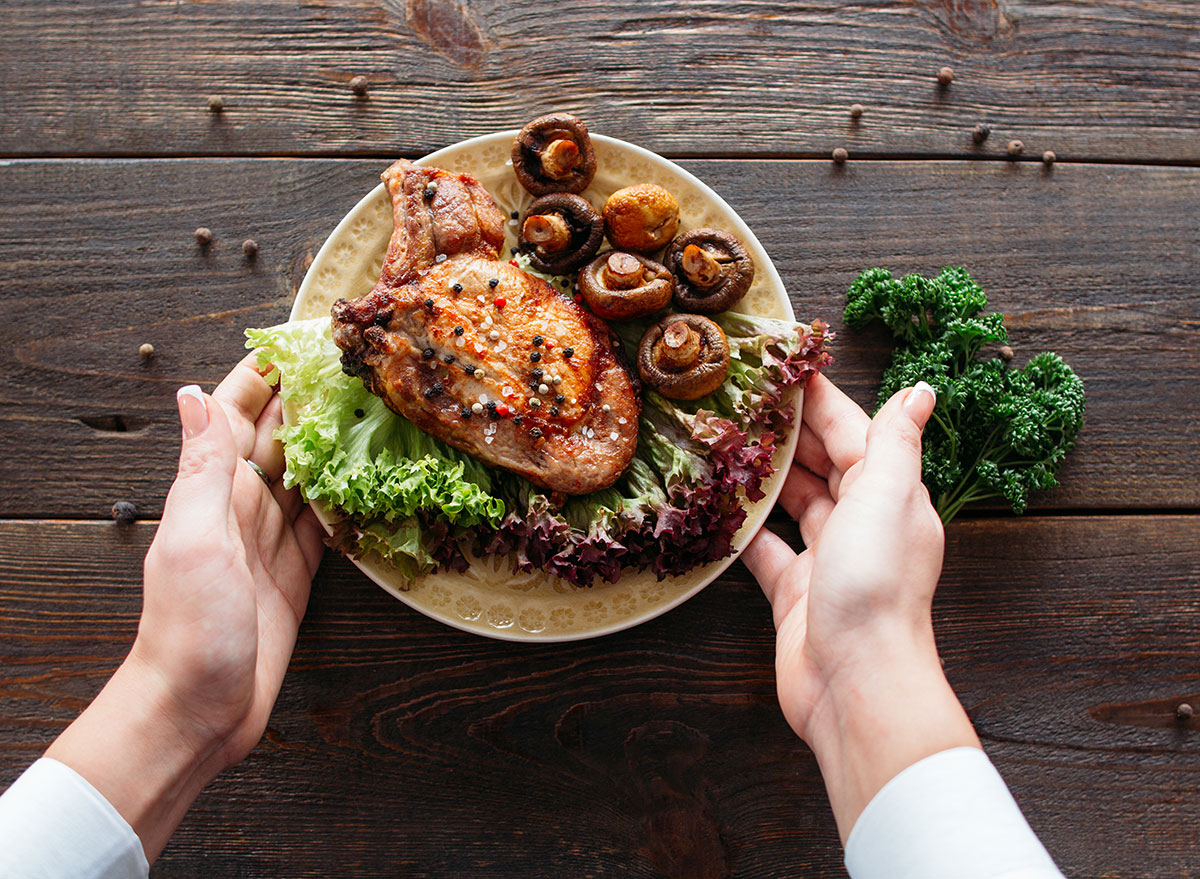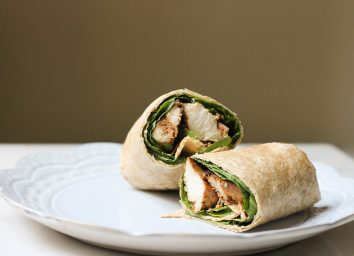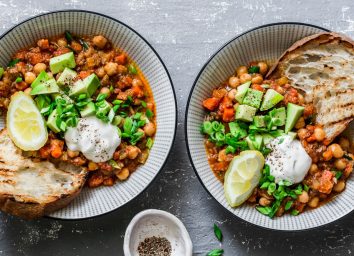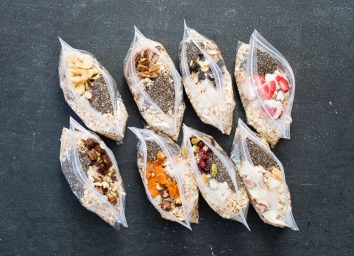This One Simple Trick Will Make All Your Meals Healthy, Say Experts

Food can be confusing. One of our main goals is to simplify and make healthy eating as easy as possible. And there may be no simpler way of judging whether a meal or snack is healthy for you than by asking three simple questions: Where's my protein, where's my fiber, and where's my healthy fat? Asking yourself these three questions while cooking is our simple trick that will make any of your meals healthy every time.
Put together a plate that provides all three, and we guarantee you've got a line on a leaner, healthier body that's functioning at the peak of its genetic programming. Hitting all three in one sitting means you're feeding your muscles. Eating a slowly absorbed, hunger-controlling meal maximizes the absorption of nutrients in your food to positively influence your genetics, and striking a major blow against cholesterol and elevated blood sugar. The three macronutrients will also help crowd out refined carbohydrates, saturated fats, added sugars, and other things that block you from reaching your health goals.
So the next time you're putting together a meal, use this simple trick of asking these three questions and you'll make any of your meals healthy. Here's why, and for more healthy eating tips, be sure to check out our list of 21 Best Healthy Cooking Hacks of All Time.
Where's my protein?
Protein helps you burn fat in three ways. First, it's the building block of muscle, and muscle burns fat. Feeding your muscles helps them frow and fight back against the forces of fleshiness.
Second, the very act of eating protein actually burns calories. About 25% of the calories you eat in the form of protein are burned up just digesting the protein itself (carbs and fat burn up no more than 10 to 15% of their calories).
And third, protein keeps you fuller longer—in part because that intense digestive process means your body perceives you as being satiated. In a 2013 study published in the journal Appetite, women were fed low-, moderate-, or high-protein afternoon snacks. Those who ate the most protein had the lowest levels of hunger and waited longer before they chose to eat again than those who ate lower-protein snacks. So be sure to add protein and it will instantly make any of your meals healthy.
Where's my fiber?
Stop thinking about "good carbs" or "bad carbs" and start focusing on fiber. If you're eating fiber, you're eating nuts and seeds, fruits and vegetables, beans and other legumes, and whole grains. That means you're packing your day with foods high in folate, vitamin B12, betaine, resveratrol, and sulforaphane—all critical nutrients that impact how active our fat-storage genes are. Fiber also allows the bacteria in your gut to produce the fatty acid butyrate, which influences the behavior of genes associated with insulin resistance and inflammation.
Fiber plays a number of additional roles in keeping us slim, but the most intriguing is its ability to suppress appetite. In spring 2014, an international team of researchers identified an anti-appetite molecule called acetate that's naturally released when the fiber is digested. Acetate then travels to the brain, where it signals us to stop eating.
Some scientists believe that the dramatic reduction in fiber in our diets is perhaps the number-one factor in our obesity crisis. Professor Gary Frost from the Department of Medicine at Imperial College in London, who was part of the team that put together the acetate study, estimated that thanks to food processing, the average Western citizen now eats about one-seventh as much fiber as humans did in the Stone Age. Makes you want to chew through a redwood, doesn't it?
So stop thinking in terms of carbs or starches and start thinking in terms of fiber. You'll find fiber in fruits, vegetables, beans, and whole grains like quinoa, oats, and brown rice—or these 43 Best High-Fiber Foods For a Healthy Diet. Follow the fiber to trip the off switch on genes related to obesity and inflammation.
Where's my healthy fat?
The greenest, freshest, most luscious salad in the world isn't as healthy as it could be if you don't add a splash of olive oil to it. The reason: healthy fats help our bodies to process the nutrients in other foods, to slow the pace of digestion—keeping us fuller, longer—and to improve our cholesterol profile and reduce inflammation. Olive oil, avocados, nuts and nut butters, chia seeds, flaxseed, and cold-water seafood are all sources of healthy fats. Some healthy fats have an impact on obesity genes; all will help improve your overall health profile. Here are a few to focus on:
- Monounsaturated fats: Olives and olive oil, nuts (including peanuts) and nut butter, avocado, dark chocolate (at least 72% cacao)
- Polyunsaturated fats: Oily fish (tuna, salmon, mackerel, or sardines), flaxseed, sunflower seeds, sesame seeds, pine nuts
- Plant-based saturated fats: Coconut (no sugar added), coconut oil (not hydrogenated)
- Omega-3 fatty acids: Cold-water fish (wild salmon, tuna, sardines), grass-fed beef, flaxseed, walnuts, chia seeds.
Though it may seem counterintuitive to add fat to a meal if you're trying to lose weight, eating a moderate portion of unsaturated fats, like the kind found in olive oil, avocados, and nuts, can ward off the munchies and keep you full by regulating hunger hormones.
So if you can look at your plate and find all three of these things—protein, fiber, and healthy fat—you're guaranteed to make healthy meals every time. Start today with one of these 100 Easiest Recipes You Can Make.








